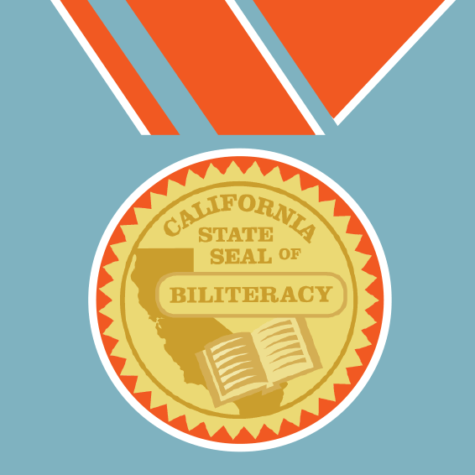
Amanda Dirpes | Writer
March 17, 2023
Different people define language fluency in varying ways, depending on the individual’s personal experience, cultural background, and linguistic abilities. Some people may consider themselves fluent in a language if they can speak it with ease and understand the majority of what they hear, while others may require a more comprehensive understanding of the language’s grammar and vocabulary.
One standard definition of language fluency is the ability to speak, read, write, and understand a language at a native or near-native level. This means being able to communicate effectively in ranging situations, including casual conversations, academic or professional contexts, and cultural settings. Achieving this level of fluency often requires years of immersion in the language, along with a dedicated study of grammar, vocabulary, and pronunciation.
“Due to my enrollment in the school district’s Dual Immersion Program, I have been learning Spanish in an academic setting since elementary school, and now I have my Seal of Biliteracy,” senior Kate Loo said.

Others may define language fluency in more specific terms, such as being able to read and comprehend a particular type of text, such as academic articles or legal documents. For example, someone may consider themselves fluent in English if they can read and understand Shakespearean plays, but struggle with conversational English in everyday situations.
Cultural background can also influence how people define language fluency. In some cultures, being able to speak a language with perfect grammar and pronunciation is highly valued, while in others, fluency may be more focused on the ability to convey emotions and build personal connections through language. For example, in some Asian cultures, fluency may be defined more by the ability to use honorifics and other formal language features to show respect, while in Latin American cultures, fluency may be defined by the ability to use idioms and other informal expressions to build rapport.
Finally, individual linguistic abilities can also play a role in how people define language fluency. For some people, fluency may come naturally, allowing them to communicate with ease even if they have not studied the language extensively. Others may struggle with fluency, despite years of study and practice, due to differences in cognitive processing or learning styles.
“My parents are immigrants from Romania, and speak Romanian at home daily, so even though I can somewhat comprehend the spoken language, I have little to no knowledge about grammar, spelling, and reading,” freshman Spencer Dirpes explained.
Language fluency is a complex concept that can be defined in a variety of ways, depending on personal experience, cultural background, and linguistic abilities. Whether fluency is defined as near-native proficiency or simply the ability to communicate effectively in a variety of situations, it is an important skill for anyone seeking to build connections across cultural and linguistic boundaries.

woah, this is a really cool article. I’ve always wondered what it means to be “fluent”